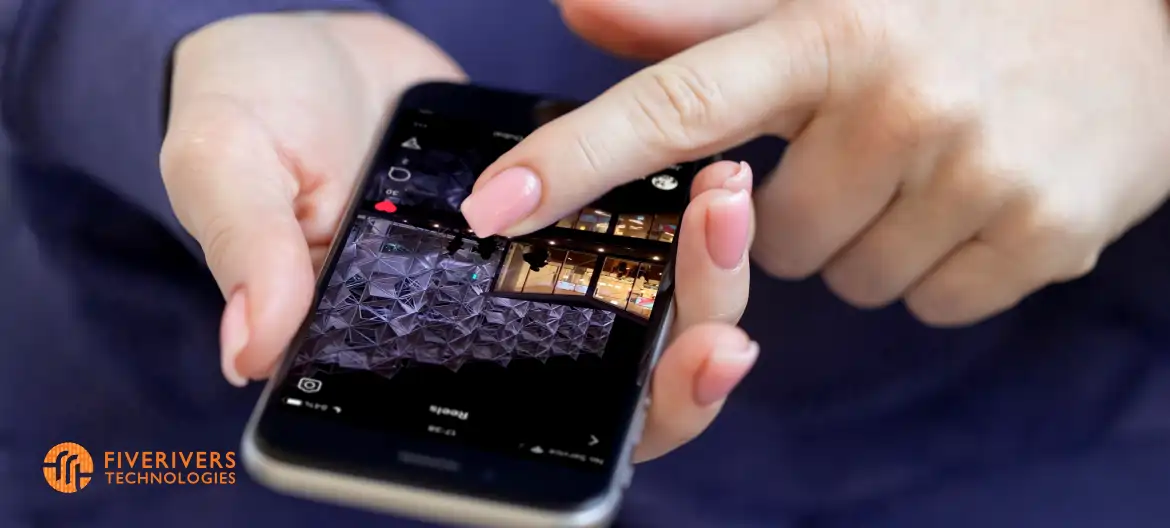Earthquakes are one of the most devastating natural disasters, often occurring without warning and causing significant destruction and loss of life. In the face of such a threat, the timely dissemination of accurate information is crucial. As technology evolves, new methods of communication and information sharing emerge, offering innovative solutions to enhance earthquake safety.
The usage of mobile applications is one of the most exciting trends in this industry. Mobile applications have the power to completely change how we receive and react to earthquake information since cellphones are so widely used.
How Mobile Apps Can Ensure Timely and Accurate Earthquake Information?
When an earthquake strikes, every second counts. The promptness and precision of the information obtained can frequently mean the difference between life and death. Timely alerts can give people precious moments to seek safety, while accurate information can help minimize panic and ensure that emergency responses are coordinated effectively.
Furthermore, access to real-time data allows for better decision-making, both at an individual level and within emergency response teams. By providing immediate updates on the earthquake's magnitude, location, and expected impact, effective communication can save lives and reduce the overall damage.
Current Methods of Earthquake Information Dissemination
Traditionally, earthquake information has been disseminated through channels such as television, radio, and public warning systems like sirens. These techniques have substantial drawbacks even if they have occasionally been successful. Television and radio broadcasts may not reach people who are away from their devices or in areas with poor reception.
Sirens can alert people to the presence of danger but often fail to provide detailed information about the nature of the threat or the appropriate response. These drawbacks emphasize the need for a more dependable and thorough strategy for disseminating information about earthquakes.
The Role of Mobile Apps in Earthquake Safety
Mobile apps present a unique opportunity to address the shortcomings of traditional dissemination methods. With the widespread adoption of smartphones, mobile apps offer a direct and immediate way to reach individuals wherever they are. Unlike television or radio, mobile apps can deliver personalized alerts and detailed information tailored to the user’s specific location. Additionally, smartphones are equipped with various sensors and communication technologies that can enhance the functionality of these apps.
Features of Effective Earthquake Safety Mobile Apps
To maximize their impact, earthquake safety mobile apps should incorporate several key features:
Real-Time Alerts and Notifications
The most critical feature of any earthquake safety app is the ability to send real-time alerts and notifications. These alerts should be fast and reliable, providing users with immediate information about an earthquake's occurrence, its magnitude, and expected impact.
Interactive Maps Showing Affected Areas
Visualizing the data can help users understand the scope and scale of an earthquake. Interactive maps can show the epicenter, affect areas, and provide information on safe zones and evacuation routes.
Safety Tips and Emergency Procedures
To help users prepare and respond appropriately, apps should include comprehensive guides on safety tips and emergency procedures. This information can cover everything from how to secure one’s home to what to do during and after an earthquake.
Integration with Social Media for Wider Reach
Social media platforms can amplify the reach of information provided by the app. Integration with social media allows users to share alerts and updates with their networks, spreading the information more widely and quickly.
Offline Capabilities for Use During Network Outages
Earthquakes can disrupt communication networks, making it essential for apps to function offline. Pre-downloaded maps, safety guides, and local emergency contact information can be invaluable when network connectivity is lost.
Challenges in Developing and Implementing Earthquake Safety Apps
Despite their potential, developing and implementing earthquake safety apps come with several challenges:
Technical Challenges
Ensuring real-time updates and handling high traffic during an earthquake can be technically demanding. Apps must be designed to handle a sudden influx of users seeking information without crashing or slowing down.
User Engagement and Trust Issues
For these apps to be effective, users must trust the information provided and engage with the app regularly. Reliability in performance, accuracy in data, and open communication regarding data collection and utilization are necessary to establish this confidence.
Ensuring Accessibility for All Demographic Groups
It's essential to ensure that these apps are accessible to all segments of the population, including those with disabilities, the elderly, and people without access to high-end smartphones or reliable internet connections.
The Future of Mobile Apps for Earthquake Safety Information Dissemination
As technology continues to advance, there are several promising directions for the future of earthquake safety apps:
Integration with Other Technologies
Combining mobile apps with other technologies such as the Internet of Things (IoT) and Artificial Intelligence (AI) can enhance their capabilities. For example, IoT devices can provide additional data points for earthquake detection, while AI can help in analyzing this data and predicting aftershocks.
Advanced User Interaction Features
Future apps could incorporate virtual and augmented reality (VR/AR) to provide immersive safety training and simulations. This could help users better understand how to respond during an earthquake.
Improved Network Resilience
Research into more resilient communication networks can help ensure that apps remain functional even during major disruptions. Satellite communication and mesh networks are potential areas for exploration.
Community Engagement and Crowdsourcing
Encouraging community engagement and leveraging crowdsourced data can enhance the accuracy and reliability of earthquake information. Users can report their experiences and provide real-time updates from affected areas.
Conclusion
The adoption of mobile apps for earthquake safety represents a significant advancement in our ability to disseminate critical information quickly and accurately. By leveraging the widespread use of smartphones and incorporating advanced features such as real-time alerts, interactive maps, and social media integration, these apps can save lives and reduce damage during earthquakes.
While challenges remain in their development and implementation, the potential benefits make them a crucial tool in modern disaster preparedness. We anticipate that as technology develops further, even more creative solutions will appear, improving our capacity to respond to and lessen the effects of earthquakes.

